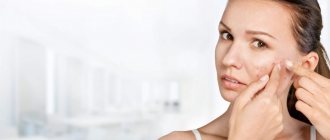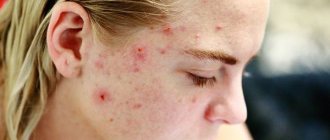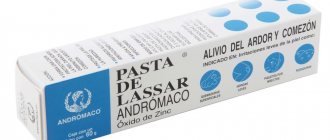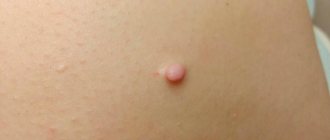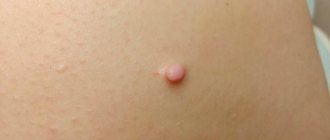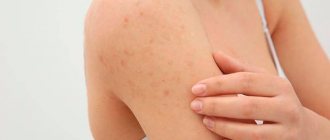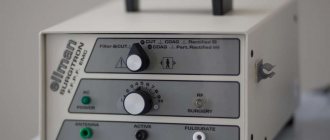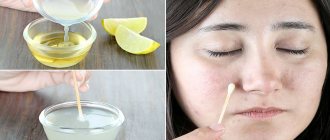Acne and its common consequence, post-acne, are a fairly acute and common dermatological problem. The term “acne” refers to acne or inflammation of the sebaceous glands and hair follicles, which is accompanied by the formation of numerous pimples of different sizes and types. Most often, this disease occurs in adolescents, lasts for years and is difficult to treat. Although it can also develop in adulthood, including after 30-35 years.
According to the latest data, more or less 85% of people suffer from acne, and in 15-30% of cases the disease is severe and requires complex, long-term complex treatment. Acne affects those areas of the skin where sebaceous glands are most concentrated. Therefore, very often it affects the face, which causes serious psychological complexes. But acne can also occur on other parts of the body, in particular the back. At the same time, one of the common complications of the disease is post-acne, i.e. persistent changes in the skin in the form of spots, and more often scars of different sizes, which are extremely difficult to deal with, but still possible.
Development mechanism
Acne, or acne, is a chronic inflammation of the sebaceous glands and hair follicles with a tendency to relapse. This is the most common skin pathology that occurs in both men and women.
Rashes most often appear in seborrheic areas, that is, places of greatest accumulation of sebaceous glands: face, shoulders, chest, upper back.
There are four factors, the combined effect of which determines the mechanism of acne development:
- Excessive secretion of the sebaceous glands and a decrease in the bactericidal properties of sebum. This phenomenon is usually found in women before menstruation. The skin secretion becomes denser, causing it to clog and block the ducts.
- Follicular hyperkeratosis. Constant renewal of the skin occurs due to the exfoliation of keratinized, dead plates. The stratum corneum of the skin thickens, and the outflow of sebaceous secretions worsens.
- Activation of propionic bacteria. These microorganisms live in the body of healthy people without causing skin diseases. However, clogging of the sebaceous gland and increased secretion of sebum create favorable conditions for the proliferation of opportunistic microflora.
- Inflammatory process. This is a natural reaction in response to the active proliferation of propionic acne bacteria.
There are 4 degrees of acne severity:
- One or two areas of the face are affected. Open and closed comedones are observed with a significant predominance of open comedones. There are isolated superficial papules and pustules.
- Several areas of the face and body are affected. A large number of open and closed comedones. Single papules and pustules.
- Against the background of open and closed comedones, a large number of deep pustules and papules are diagnosed. Hyperemia of the affected areas is common due to a pronounced inflammatory reaction. There are post-acne phenomena: scars, stagnant spots, hyperpigmentation.
- Large (more than 5 mm in diameter) bluish-purple painful infiltrates, conglobate elements (several large nodes located nearby, connected by fistulous tracts), large cysts that resolve with the formation of rough atrophic scars are observed.
Causes
Acne is a polyetiological disease, the appearance of which is caused by both chronic diseases and external factors. To determine what served as the trigger for the development of pathology, it is important to observe a person’s lifestyle, what cosmetics he uses, what medications he takes. To get a complete picture, you will need to consult a dermatologist and cosmetologist, who will prescribe a list of necessary tests.
Experts attribute the leading role in the development of acne to hereditary predisposition. For example, the size and visibility of pores can be passed on from parents to children. It was found that genetic factors are responsible for 50% of all cases. The formation of acne is promoted by a large number of exogenous and endogenous factors.
Exogenous (external) causes
The following reasons can cause the development of acne in adults:
- Improper facial care. Using low-quality cosmetics can cause clogged pores. Inflammation can even be caused more naturally by vegetable oils used for moisturizing purposes and sunscreens. It is better to choose a cream with a light texture marked “non-comedogenic.”
- Climatic conditions. Increased humidity can cause hypersecretion of the sebaceous glands.
- Squeezing pimples. Mechanical injury leads to even greater spread of inflammation into surrounding tissues. In the absence of sterility, infection is inevitable, which aggravates the situation. When the deeper layers of the skin are involved in the inflammatory process, rough scars and cicatrices appear.
- Skin and environmental pollution. Dirt on the face clogs the pores, causing a rash.
- Contact with toxic substances. This applies to people who work in hazardous industries and are forced to constantly come into contact with chemicals, solvents, varnishes and paints.
- Ultraviolet exposure. Direct sunlight dries the skin. To compensate for the condition, excess sebum secretion begins. It is important to use sunscreen before going outside.
Food choices also affect the condition of your skin. These include fried, smoked foods, fast foods, dairy products, and chocolate. It is important to monitor how your skin reacts to certain foods. If inflammation and redness occur, it is better to avoid such products.
The predominance of carbohydrate foods in the diet increases the secretion of the sebaceous glands. Acne is often diagnosed against the background of gastritis, pancreatitis, and dysbacteriosis.
Uncontrolled consumption of sugary foods causes a sharp increase in insulin, a hormone that regulates blood glucose levels and affects testosterone. When a person eats a bar of chocolate, the blood sugar level jumps, and with it the levels of the male hormone.
You should not allow frequent insulin spikes during the day. To do this, you should maintain a “food window” (fasting) between main meals. This will help reduce the production of male hormones, and along with them the amount of inflammation will decrease.
Polynesians, isolated from civilization, practically do not suffer from acne. However, after switching from their usual diet to the diet of the average person on the planet, they often experience skin problems.
You should not neglect daily cleansing of the skin, however, excessive cleanliness can also cause comedones. Frequent use of personal hygiene products leads to a violation of the composition and a decrease in the number of beneficial microflora, which do not allow propionic acne bacteria to actively multiply.
Endogenous (internal) causes
In the first place among the endogenous causes of acne are hormonal changes. Sebum production is controlled by androgens: testosterone, which is found in women, and others close to it. If their level exceeds the norm, the skin begins to produce more sebum.
The thyroid gland is responsible for the amount of hormones produced by the body. With hyperthyroidism (hyperfunction), pustules appear on the skin, body temperature rises and weight decreases. With hypothyroidism (hypothyroidism), acne also appears, the skin becomes dry, and the menstrual cycle is disrupted.
Laboratory blood tests (thyroid-stimulating hormone, triiodothyronine, antibodies to thyroglobulin, antibodies to TSH receptors, calcitonin) will help evaluate the functional activity of the thyroid gland. To understand the cause of acne in adults, it is also necessary to get tested for the level of sex hormones. An ultrasound examination of the uterus, ovaries and thyroid gland will also be required.
In women, acne may worsen during or after pregnancy, before menstruation, or during menopause. Hormone levels also change after discontinuation of oral contraceptives.
However, men more often suffer from acne, and in severe forms. To identify causative factors, gastroscopy is prescribed, as well as an analysis for the presence of the bacterium Helicobacter pylori. A detailed biochemical blood test may be required.
Chronic stress is another cause of rashes. The release of the stress hormone cortisol affects the condition of the skin. Negative emotions accumulated over the years break out in the form of acne, blockages and irritations on the face.
You need to give yourself the opportunity to rest and relax. The first rule that cannot be ignored is healthy sleep at least 8 hours a day.
Acne in adulthood
Diagnostics
If signs of acne occur, you should consult a dermatologist or dermatocosmetologist. The doctor will not only evaluate the number of elements, their nature, location and the presence of signs of post-acne, but will also clarify the patient’s dietary habits, whether close relatives have suffered from similar acne on the face, and a number of other points. In general, acne can be diagnosed and its severity determined at the first consultation, since the disease has a specific clinical picture.
But in order to choose the optimal treatment tactics, you need to accurately determine the cause of acne development and assess the general condition of the body. For these purposes, patients are prescribed:
- UAC;
- OAM;
- blood chemistry.
Identifying the cause of acne is extremely important, as it is a chronic disease. Therefore, in the absence of control, it can recur at any time when favorable conditions are created.
When diagnosing post-acne, the nature of facial skin changes, the presence of scars, their shape, depth, localization, and ability to smooth out when the skin is stretched are also assessed.
Signs
Acne in adults manifests itself as:
- Subcutaneous acne, or closed comedones. These are black or gray rashes that appear as a result of oxidation of the contents of the pores. Acne consists of inflamed and compacted discharge. They arise as a result of blockage of the mouth of the sebaceous glands with sebum, cosmetics or dust. Localized in the area of the forehead, chin and wings of the nose. Single subcutaneous acne can be eliminated with proper skin care.
- Black dots. Unlike closed comedones, they appear on the surface of the skin. They are usually unnoticeable, felt only as some unevenness. They do not cause inflammatory processes or pain.
- Cyst. Filled with pus and usually leave behind scars.
- Nodul. These are subcutaneous nodular formations that look like hard tubercles. Nodules are accompanied by an inflammatory reaction and cause pain when pressed. May be surrounded by purulent formations.
- Papules They appear as a small red rash. They do not have purulent contents. Typically, papular acne breaks out en masse, giving the skin a bumpy appearance. They can be a symptom of some serious diseases, such as chickenpox, measles, and lichen planus. Therefore, if your entire face is covered in pustules, it is better to consult a doctor.
- Pustule. These are quite painful acne with white contents. They can heal without a trace, and in some cases leave behind noticeable scars. Pustular acne is not dangerous, but requires treatment due to its infectious nature.
Acne in adults develops according to the same scenario as in adolescents. It all starts with increased sebum production, leading to clogged glands. Then bacteria begin to actively multiply in the ducts, which leads to the development of an inflammatory reaction and the formation of rashes.
However, later acne is different from teenage pimples. Acne usually runs deeper and is localized to the chin and cheeks rather than the T-zone. They often manifest themselves in the form of more painful and bright inflammations and resolve less well. Later acne is more difficult to clean up and often leaves behind scars. The formation of complications in the form of spots, bumps and scars occurs due to age-related deterioration of skin regeneration.
Acne in adulthood
Varieties of post-acne
In addition to atrophic scars - a type of post-acne, which we wrote about separately in another article, there are also post-inflammatory erythema and post-inflammatory pigmentation. Today’s article is devoted to these two phenomena.
Before talking about these unpleasant consequences, it is worth understanding where and why a pimple occurs in the first place. A pimple itself is an inflammation that the body does not allow into the blood, namely: at the site of infection, the capillaries narrow, then expand, building a dense defense of leukocytes. They fight infection, after which they restore damaged tissue and create new blood vessels. Visually the pimple goes away.
If the pimple is squeezed out, the natural healing process is disrupted. The infection can get into the blood, the probability of this is quite high. The vessels are certainly injured and leave marks.
Thus, post-inflammatory erythema occurs due to the accumulation of dilated capillaries, which could have been restored to a healthy epidermis if the pimple had not been pressed in this place. Most often, post-inflammatory erythema appears on light skin. Most Russians and Europeans who deal with the problem of post-acne are susceptible to it. Erythema appears as a pink, red, or purple patch left at the site of the pimple. The color is due to injury to the capillaries in the inflamed area. Sometimes erythema goes away on its own within six months, but not always - it all depends on the individual characteristics of the body.
Post-inflammatory pigmentation - brown spots. The color is due to the increased content of melanin, which occurs due to exposure of aggressive sun rays to unprotected, injured skin. Most often, dark-skinned and dark-skinned people, as well as women over 35 years of age, suffer from this disease due to endocrine changes. In most cases, the cause of pigmentation is inflammation of the papulopustular elements of acne, as well as scratching the area of squeezed out pimples.
Stages of development
Rashes appear alone or in groups, disappear unnoticed or are accompanied by discomfort. Depending on the number and nature of acne, experts distinguish 4 main stages of acne development:
- Easy. A single number of small acne, not accompanied by an inflammatory process.
- Average. There are more and more rashes, some of which show signs of inflammation. At this stage, the prognosis with adequate treatment is favorable.
- Heavy. A large number of inflammatory comedones, as well as cysts and nodes, are added.
- Extremely heavy. There are more than forty elements of rashes on the face. At this stage, local remedies and nutritional adjustments will not correct the situation. Need help from a specialist.
Treatment methods
The speed of getting rid of acne is related to how quickly treatment is started. Discipline in diet and daily hygiene, as well as strict adherence to the dermatologist’s recommendations for the use of medications and skincare cosmetics will help speed up recovery.
You can completely get rid of acne only with an integrated approach. The problem cannot be solved with just one drug or cosmetic procedure. You need to prepare yourself for a long course of therapy and recovery. There are no products that can remove all imperfections and imperfections overnight.
Drugs
Already at the second stage of acne, it is advisable to use medications. First-line drugs in the treatment of acne include benzoyl peroxide, tretinoin, and azeloic acid.
They are prescribed to provide anti-inflammatory and antibacterial effects. The drugs show their effectiveness only with long-term use - at least three months.
If first-line remedies are unsuccessful, topical antibiotics may be prescribed. Oral antibacterial drugs are used for moderate acne. When treating acne in women with hyperandrogenism, hormonal contraceptives can be prescribed.
Cosmetology
The fight against problem skin is a labor-intensive and continuous process. To normalize the functioning of the sebaceous glands, you will need a whole arsenal of scrubs, peelings, masks, but sometimes this is not enough. In this case, you cannot do without the help of professional cosmetologists. Cosmetology offers a variety of procedures for those with problem skin. Let's look at the most popular and effective of them.
Peelings
The principle of peeling is to exfoliate dead horn cells. This leads to a decrease in the activity of bacteria that cause inflammation. Microorganisms deprived of their usual nutrient medium die.
The most common treatments for acne are superficial peels. They promote gentle cleansing of the skin, normalize cellular respiration and the functioning of the sebaceous glands, without causing major injuries.
In case of scarring, unevenness and spots, preference is given to medium exfoliation. And in the most severe cases, deep peeling can be used.
Biodermabrasion
This is essentially the same peeling only with a complex effect. Biodermabrasion is carried out in several stages:
- Cleansing.
- Superficial preparatory peeling.
- Application of a product that enhances blood microcirculation.
- “Steaming” the skin with creams.
- Mechanical exfoliation.
- Applying soothing masks and cream.
The procedure makes pores less noticeable, removes clear spots, and normalizes the functioning of the sebaceous glands. It is absolutely not traumatic for the skin and does not require special care.
Laser resurfacing
The laser beam precisely affects the cells of the upper layer of skin and deeper structures, promoting their renewal. As a result, the natural process of collagen and elastin production is launched, tissue trophism and blood microcirculation are improved, and the relief is leveled.
The dermis begins to independently regenerate damaged layers. In place of spots and scars, new young skin is formed.
A special feature of laser resurfacing is its effect on individual areas. The finest laser beams of a kind evaporate the damaged areas.
The result is visible immediately after the procedure. Sanding can be done again after six months. In addition to the fact that unevenness and scars disappear, the skin will become smoother and tighter.
Mesotherapy
Mesotherapy has a complex effect on the skin:
- immunostimulating effect;
- saturation of the epidermis with vitamins;
- antibacterial effect;
- antioxidant effect.
Microscopic doses of the drug are injected into the middle layer of the skin. Each acne element is chipped separately. The cosmetologist uses a “cocktail” of drugs. They contain antibiotics, anti-inflammatory and healing substances, as well as vitamins and microelements.
The meso cocktail is injected directly into the problem area. This allows the drug to be delivered to the site of inflammation, stop it and destroy bacteria.
Ultrasonic cleaning
Ultrasound cleanses the surface of the skin. This is a low-traumatic procedure. The result is noticeable after the first cleaning. Ultrasound removes scars, scars, and stretch marks from the face.
Ultrasonic waves emit high-frequency vibrations, weakening the connection with dying cells and allowing them to be easily removed. They moisturize the skin, accelerate regeneration processes and activate redox processes.
How to remove acne spots with Fermencol gel
A specially developed Fermenkol line will help remove post-acne spots, aimed at correcting skin texture, normalizing color and restoring healthy tissue. All Fermenkol products contain 9 active collagenase enzymes, which “eat up” the destroyed vascular endothelium, improve local capillary circulation and, as a result, even out skin color.
Fermenkol also eliminates deformed collagen and, penetrating the dermis, acts only on pathological tissue, without affecting intact (healthy) areas of the skin. The result: clean, smooth skin without pigmentation.
To enhance the cosmetic effect, experts recommend using Fermenkol together with phonophoresis. The course of procedures can be completed either in a clinic at your place of residence or at home with a portable Reton device for phonophoresis. You can purchase Fermenkol products by placing an order online on the official website or in pharmacies in your city. Before use, consult a specialist; he will prescribe the optimal number of procedures. It is easy to get a consultation from a practicing doctor; to do this, you need to click the “doctor” button, describe your situation in detail and attach a photo of the damaged area.
Fermenkol products have already helped many people get rid of acne spots, here is just one of the reviews:
Remember! The sooner you start the course, the faster you will achieve the desired result and will again be able to enjoy healthy and beautiful skin.
Prevention
Facial care does not take much time. It is enough to pay attention to this just twice a day to avoid problems in the future. Daily care takes place in five stages:
- Cleansing. Products containing anti-inflammatory substances and fruit acids should be applied to the skin twice a day. To cleanse, you can use milk, mousse or gel.
- Toning. Used to balance skin acidity and eliminate microorganisms that can cause acne. You should not use alcohol-based toners, as they will dry out the skin. It is worth choosing the product carefully, as it does not wash off.
- Moisturizing and nutrition. It is better to give preference to creams from professional brands or pharmacy lines.
- Peeling. To exfoliate skin with acne, it is best to use acid-based products. For pustular rashes, peelings with particles can cause the appearance of new elements.
- Masks. It is enough to do it several times a week. The product is selected depending on the skin type and its needs. It is better to apply the mask with a brush, which must be disinfected after each use.
Good daily care is extremely important for acne. It helps remove excess sebum, keeps pores clean, and also speeds up the healing of open acne.
It is better to entrust the selection of treatment method and care products to a specialist. This way, the process of getting rid of acne will be safe and effective.
What else do you need to know
There is no single best acne treatment. If the drug does not help within two to three months, it is replaced with another one. A long period of time is needed to evaluate the effectiveness, since eels need at least eight weeks to mature, it is unlikely that significant improvement will occur sooner.
Many people experience skin irritation—redness and peeling—when they first start using topical acne treatments. This is not an allergy; this reaction usually goes away over time. In such a situation, until the skin gets used to it, you can apply the drug with a lower concentration or less often, not even every day, and as you get used to it, start using it more often and in a higher concentration. In addition, you can additionally use a moisturizer, but it must be non-comedogenic.
During pregnancy, many drugs are contraindicated. Women who are pregnant or planning to become pregnant should stop acne treatment before becoming pregnant. If treatment during pregnancy is necessary, topical erythromycin, clindamycin, or azelaic acid may be prescribed after assessing the risks versus benefits of therapy.
Patients who improve with treatment are usually advised to continue treatment with topical retinoids (sometimes along with benzoyl peroxide).
